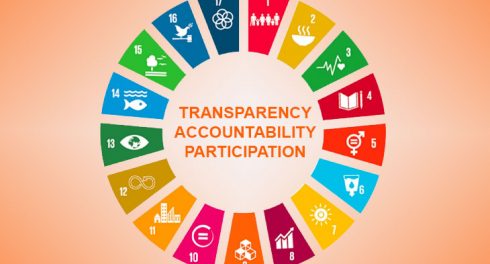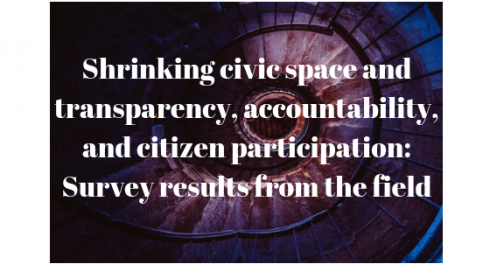“Michael Jarvis, Executive Director of TAI funder collaborative also provided input.”

Image Credit: Cultura Científica
The latest Corruption Perceptions Index data released this week is hardly edifying reading – not least for those of us living in the United States. Two thirds of countries surveyed have scores under 50 on a scale from 1 to 100.
Clearly, people in much of the world are worried about corruption. We know that corruption revelations can motivate action. Revelations such as those in the Panama or Pandora Papers from the government sparked public outrage, got people in the streets and had tangible impacts from governments toppled to government contracts canceled. However, systemic reform has been harder to come by. This sparks concern that these exposes fuel public disillusion – “we simply replace one set of crooks with another.” Disillusionment can engender voter apathy, boost populist appeal, and risk undermining democratic institutions.
So, how to uncover what is going on, hold the corrupt to account, but prevent that disillusionment? This was the framing question for a recent Transparency and Accountability Initiative (TAI) funder conversation together with leading anti-corruption academics and practitioners. Here are four takeaways from that discussion:
- Move from the individual to structures and groups: The Topos Partnership (with support from Open Society Foundations) researched how communicators can promote measures to curb corruption without increasing pessimism. They recommended focusing on the “hard guardrails” of democracy versus “soft guardrails,” which consist of norms and expectations. This shifts the emphasis from individuals (focus on harms of corruption and punishing offenders) to structures (keeping government focused on the public good).
- Flagging consequences is essential: The media plays a large part in shifting perceptions. If the media reports on instances of corrupt behavior, but does not as prominently report on prosecutions or other forms of accountability when they occure, then it reinforces popular sentiment that corruption runs unchecked and must be widespread. People are sensitive to whether they perceive rewards or punishments for corrupt behavior. There is a desire to see retribution. Making consequences visible can therefore be helpful in building some comfort that existing institutions are working.
- Strength in numbers: The Kuleta Haki project brought together different criminal justice actors who believed that a united resistance was better for changing the system and a possibility for the long term. The review team discovered that people not involved in the program but in the broader judiciary identified with the Kuleta Hari group. This success story suggests a learning opportunity to amplify the ripple effect of anti-corruption initiatives to strengthen positive perceptions of state institutions.
- Change the narrative: On the one hand, there is an opportunity to harness investigations, such as the Pandora Papers, and frame as good news – more secrets are being uncovered and have more visibility providing the tools to hold bad actors accountable. On the other hand, there is an opportunity to show case those who are acting with integrity – reveal how public servants are serving the public good and protecting public resources. We should invest in understanding what progress looks like on both fronts and gather/showcase success stories
-
- Accountability Lab’s Integrity Icon is an excellent start for a supply-side celebration of individuals who embody integrity. Still, there is a challenge to broaden awareness beyond individuals to teams/institutions that are working in ways that minimize opportunities for any corruption.
- Highlighting more immediate anti-corruption effects can help control this cycle of fatigue and cynicism.
The conversation revealed an appetite to explore these issues further and continue to track emerging evidence (such as from the Anti-Corruption Evidence research consortium, MIT GOV/LAB and the Corruption, Justice and Legitimacy Program) to inform funder supported programming. These are very live issues for the MacArthur On Nigeria team that I work with that supports diverse actors to reduce corruption. We welcome insights that can be useful for our partners championing good governance on the ground. If we do it well, perhaps next year’s CPI scores will see a positive bounce!


